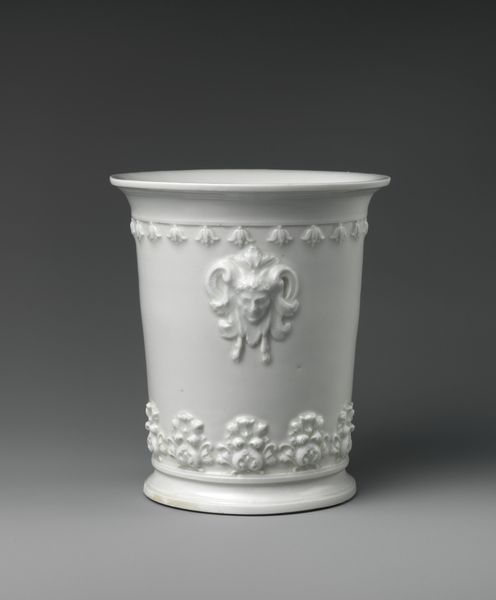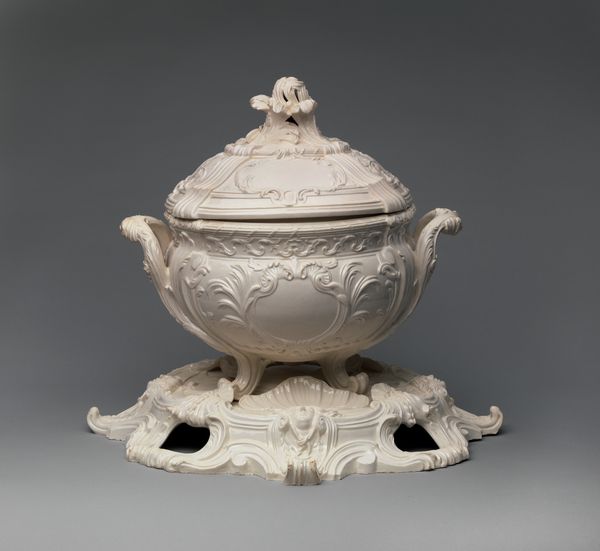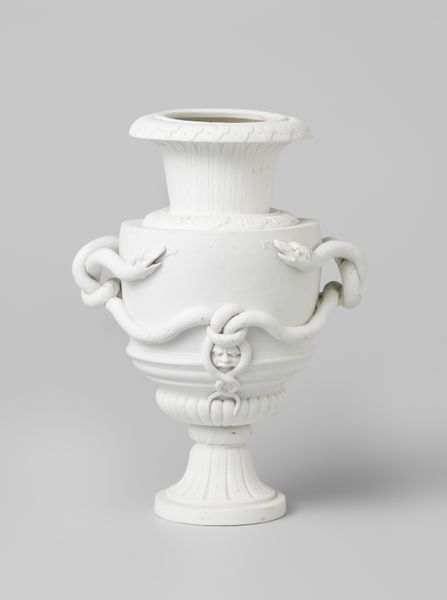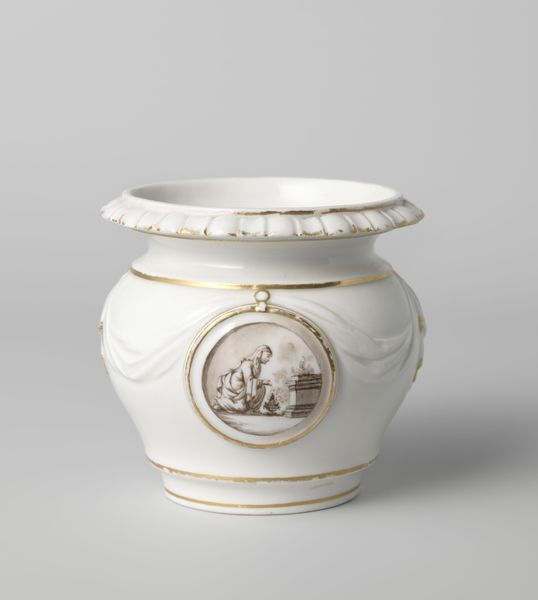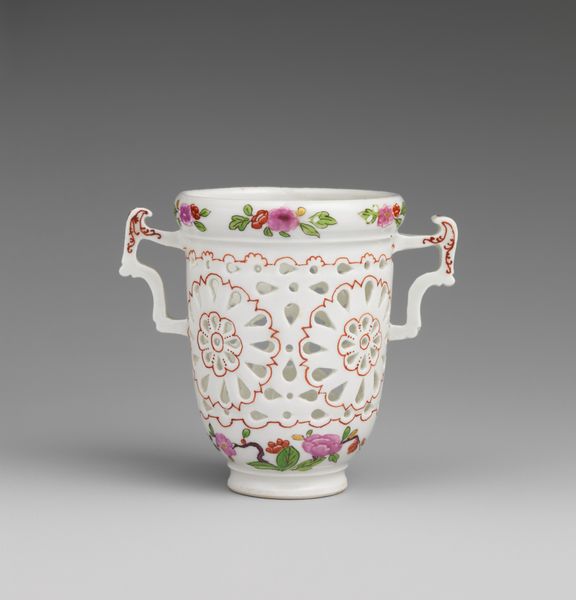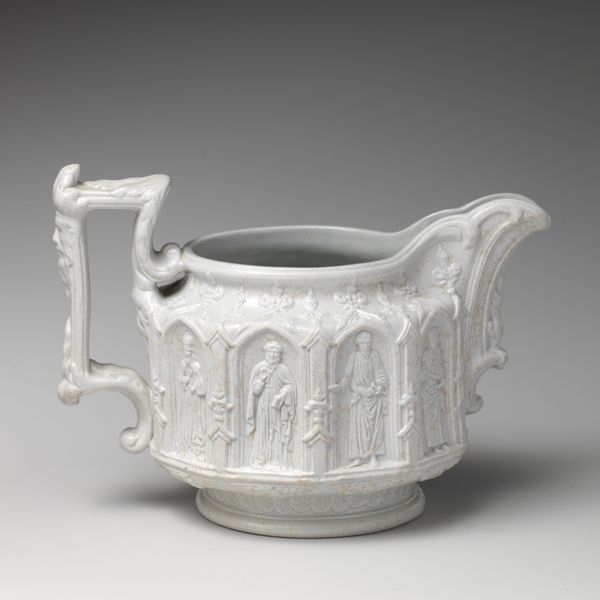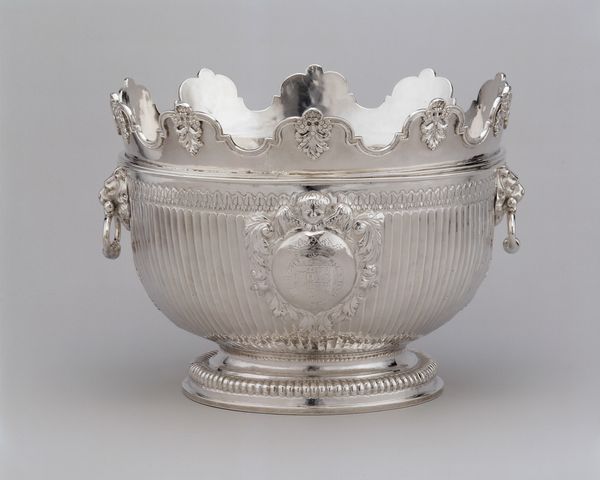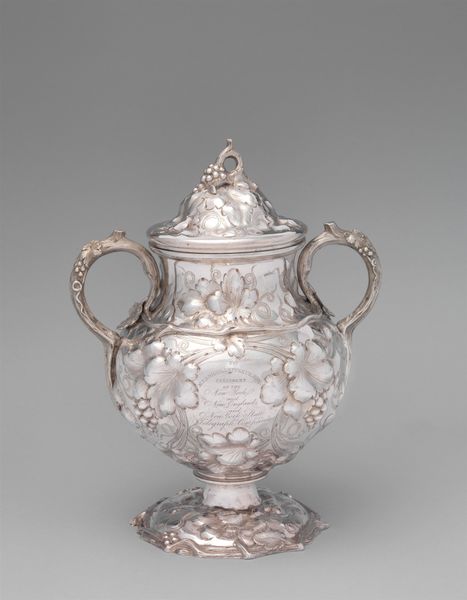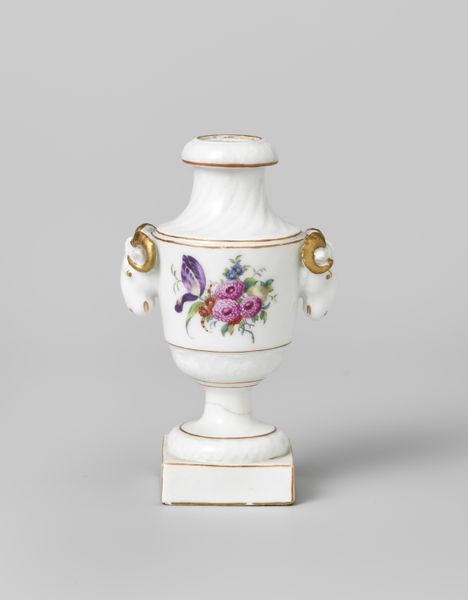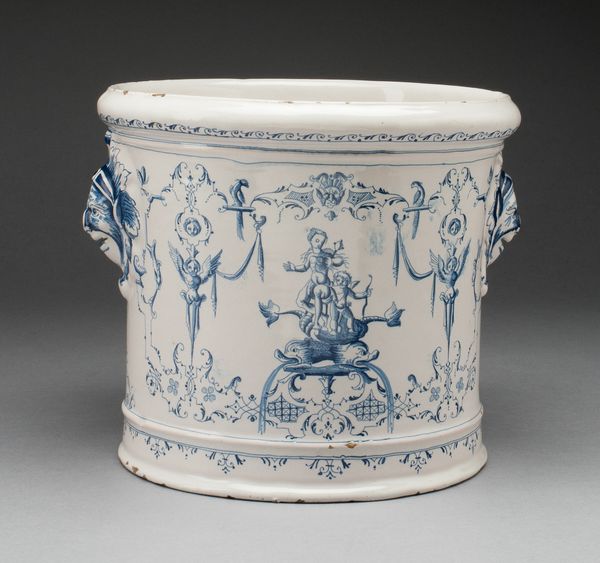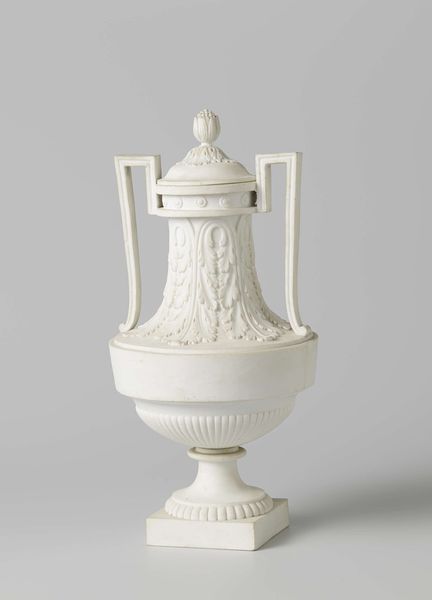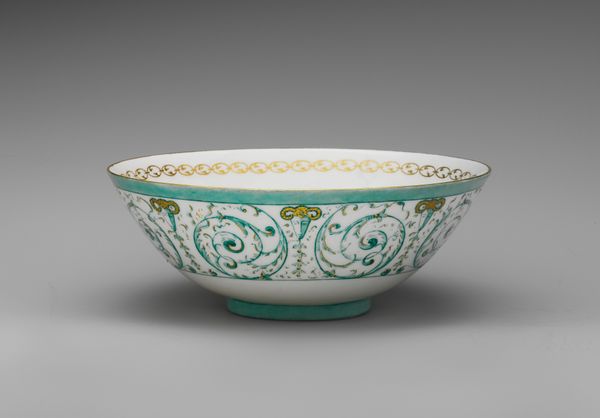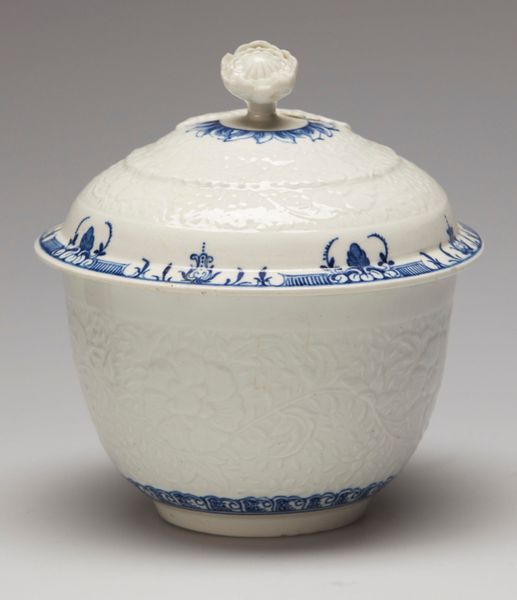
ceramic, porcelain, sculpture
#
ceramic
#
porcelain
#
sculpture
#
decorative-art
#
rococo
Dimensions: Height: 4 13/16 in. (12.2 cm)
Copyright: Public Domain
Curator: Here we have a "Wine glass cooler," crafted between 1715 and 1745 by the Saint-Cloud factory. It resides here at the Metropolitan Museum of Art. The cooler, or vessel, is crafted from porcelain, with some elements of ceramic work, qualifying it as sculpture in its design. Editor: It feels almost too proper, doesn’t it? Like something Marie Antoinette would’ve dunked her grapes into before nibbling while discussing tax policy! Curator: Precisely! We see the echoes of Rococo design in its form, revealing a social world obsessed with delicacy and opulent display, ignoring the brewing revolutionary tempests. What about the all-white glaze, then, editor? Editor: Hmmm, purity? Virginity? Bourgeois virtue desperately trying to cover something up. You could hide all sorts of sins in that flawless surface... a chipped tooth, an inconvenient child… Curator: Very astute, very astute! It raises a poignant question about visual rhetoric then. The material speaks volumes, porcelain itself a symbol of luxury, accessibility, and the chasm of class differences it exacerbated during that historical moment. Saint-Cloud specialized in this refined aesthetic that catered directly to aristocratic tastes, further emphasizing social stratification. Editor: Absolutely! The symmetrical floral reliefs feel almost stiflingly formal. And the handles: Those grotesque, lion-like figures staring out! They seem so contrary, almost spitting venom. Like the true spirit of the aristocracy barely concealed, waiting for an eruption of revolution. Curator: That's an incredible perspective on the cooler’s social subtext. And I hadn't considered the animal handles like that. They symbolize status, power, but they might even subtly represent underlying savagery, too, perhaps. Editor: Yeah! This unassuming, elegant cooler just secretly admits a violent truth of society back then...or perhaps always. That wealth relies upon the labor and oppression of someone, somewhere. Curator: Exactly. So, as we look at the object today, it becomes this complex tapestry of history, craftsmanship, design, and cultural values. The Rococo is so often seen for its lightness, frivolity and decoration, which sometimes obscures its complicity in larger, violent social systems. Editor: I know! It’s amazing that one fancy-schmancy cooler can whisper all those stories across the centuries, right? That is, if you dare to listen to it!
Comments
No comments
Be the first to comment and join the conversation on the ultimate creative platform.
